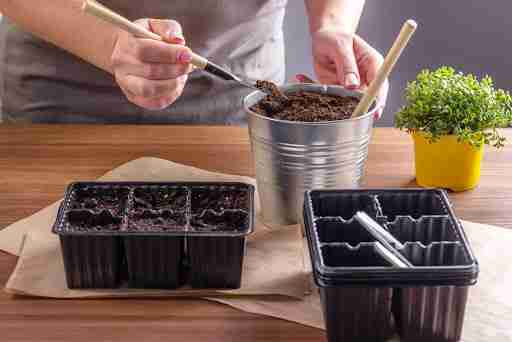Cosmos flowers, with their vibrant and delicate petals, are a delightful addition to any indoor garden. Known for their striking colours and ability to attract pollinators, these versatile flowers can thrive indoors, bringing beauty and joy to your living space. While traditionally grown outdoors, cultivating cosmos indoors allows enthusiasts to enjoy their captivating blooms year-round, regardless of climate or space limitations. In this article, we will explore the steps and considerations involved in successfully growing cosmos flowers indoors, ensuring a flourishing and rewarding experience for both novice and experienced indoor gardeners.
Table of Contents
Choosing the Right Cosmos Varieties
Before embarking on your indoor cosmos gardening journey, it is essential to select the right variety that will thrive in an indoor environment. Some popular cosmos varieties suitable for indoor cultivation include the Cosmos bipinnatus (common cosmos), Cosmos sulphureus (sulphur cosmos), and Cosmos atrosanguineus (chocolate cosmos). These varieties are known for their adaptability to indoor conditions, compact growth habits, and stunning blooms.
Providing Optimal Growing Conditions
To ensure the successful growth of cosmos flowers indoors, it is crucial to replicate their preferred growing conditions as closely as possible. Here are some key factors to consider:
- Lighting: Cosmos flowers thrive in bright sunlight. Place your indoor cosmos garden near a south-facing window or use grow lights to provide the necessary light intensity for healthy growth.
- Temperature and Humidity: Cosmos plants prefer temperatures between 60-75°F (15-24°C). Maintain moderate humidity levels between 40-60% to prevent dryness or excessive moisture.
- Soil: Choose a well-draining potting mix enriched with organic matter. A balanced pH level between 6.0-7.0 will ensure optimal nutrient absorption.
Starting Seeds or Transplanting Seedlings
Growing cosmos indoors can begin either from seeds or transplanted seedlings. Here’s how to proceed with each method:
Starting from Seeds
a. Select high-quality cosmos seeds from a reputable source.
b. Fill seed trays or small pots with moistened seed-starting mix.
c. Sow the seeds at a depth of ¼ inch (0.6 centimetres) and cover them lightly with the mix.
d. Maintain consistent moisture by misting the soil surface regularly.
e. Place the seed trays in a warm area with temperatures around 70°F (21°C).
f. Once the seedlings emerge, provide ample light and gradually acclimate them to their final growing location.


Transplanting Seedlings
a. Purchase cosmos seedlings from a nursery or start your own from seeds and transplant them when they have developed a few true leaves.
b. Prepare larger pots or containers with well-draining soil mix.
c. Carefully remove the seedlings from their initial containers, being cautious not to damage the roots.
d. Plant the seedlings at the same depth as they were in their previous container.
e. Water thoroughly after transplanting and maintain appropriate lighting and temperature conditions.
Watering, Fertilising, and Pruning
Proper watering, fertilisation, and pruning are essential for the health and longevity of indoor cosmos flowers.
- Watering: Cosmos plants prefer slightly moist soil. Water them when the top inch of soil feels dry to the touch. Avoid overwatering, as it can lead to root rot, but also ensure that the plants do not experience prolonged dry spells.
- Fertilising: Feed your cosmos plants with a balanced water-soluble fertiliser every two to three weeks during the growing season. Dilute the fertiliser according to the manufacturer’s instructions to prevent overfertilisation.
- Pruning: Regularly remove spent blooms to encourage continuous flowering and prevent seed formation. Pinching off the tips of young plants can promote bushier growth.
Dealing with Pests and Diseases
Despite their resilience, cosmos plants may occasionally face pest and disease challenges. Common issues include aphids, spider mites, and fungal diseases. Here are a few preventive measures and treatment options:
- Prevention: Maintain proper air circulation and avoid overcrowding plants. Regularly inspect your cosmos for signs of pests or diseases.
- Natural Remedies: Introduce beneficial insects like ladybugs or lacewings to control aphids. For spider mites, rinse the leaves with a strong water spray. Fungal diseases can be managed by ensuring good air circulation and avoiding excessive moisture on leaves.
- Organic Pesticides: If natural remedies are not effective, consider using organic insecticidal soaps or neem oil. Follow the instructions carefully to prevent harm to beneficial insects.


Conclusion
Growing cosmos flowers indoors allows gardening enthusiasts to enjoy the beauty of these radiant blooms throughout the year. By providing optimal growing conditions, starting from seeds or transplanting seedlings, and maintaining proper watering, fertilisation, and pruning practices, you can create a thriving cosmos garden indoors. Remember to monitor for pests and diseases, intervening promptly and employing preventive measures to ensure the health and vitality of your plants. With dedication and a bit of green-thumb magic, you can cultivate a stunning cosmos display that will brighten up your indoor space and provide endless enjoyment. Happy gardening!

